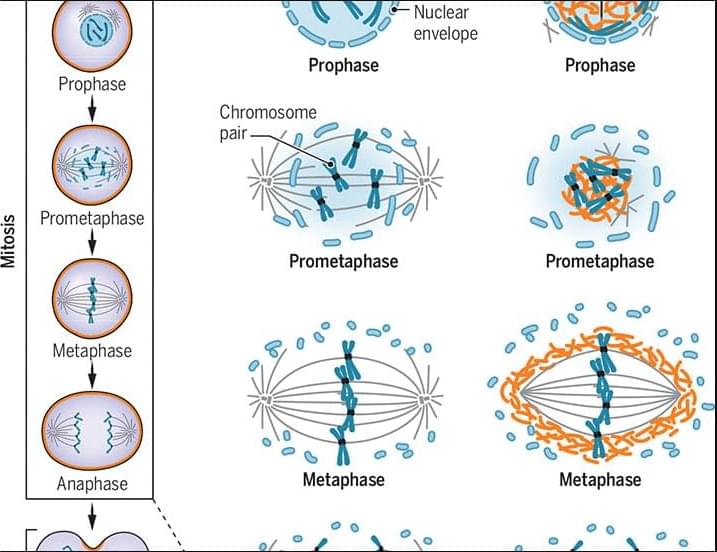It may not be long before Artificial Intelligence creates access to God via modern technology, however during the 19th century, a spiritualist by the name of John Murray Spear was inspired to build a Mechanical Messiah.



A regular heartbeat is essential to vertebrate life. In the mature heart, this function is driven by an anatomically localized pacemaker. By contrast, pacemaking capability is broadly distributed in the early embryonic heart1–3, raising the question of how tissue-scale activity is first established and then maintained during embryonic development. The initial transition of the heart from silent to beating has never been characterized at the timescale of individual electrical events, and the structure in space and time of the early heartbeats remains poorly understood. Using all-optical electrophysiology, we captured the very first heartbeat of a zebrafish and analysed the development of cardiac excitability and conduction around this singular event. The first few beats appeared suddenly, had irregular interbeat intervals, propagated coherently across the primordial heart and emanated from loci that varied between animals and over time. The bioelectrical dynamics were well described by a noisy saddle-node on invariant circle bifurcation with action potential upstroke driven by CaV1.2. Our work shows how gradual and largely asynchronous development of single-cell bioelectrical properties produces a stereotyped and robust tissue-scale transition from quiescence to coordinated beating.
© 2023. The Author(s), under exclusive licence to Springer Nature Limited.
Questions to inspire discussion.
🤖 Q: How quickly will AI and robotics replace human jobs? A: AI and robotics will do half or more of all jobs within the next 3–7 years, with white-collar work being replaced first, followed by blue-collar labor through humanoid robots.
🏢 Q: What competitive advantage will AI-native companies have? A: Companies that are entirely AI-powered will demolish competitors, similar to how a single manually calculated cell in a spreadsheet makes it unable to compete with entirely computer-based spreadsheets.
💼 Q: What forces companies to adopt more AI? A: Companies using more AI must outcompete those using less, creating a forcing function for increased AI adoption, as inertia currently keeps humans doing AI-capable tasks.
📊 Q: How much of enterprise software development can AI handle autonomously? A: Blitzy, an AI platform using thousands of specialized agents, autonomously handles 80%+ of enterprise software development, increasing engineering velocity 5x when paired with human developers.
Energy and Infrastructure.
Why 2026 Changes Everything for Tesla, Grok & SpaceX
## Elon Musk’s companies, including Tesla and SpaceX, are expected to experience significant breakthroughs and growth in 2026, driven by advancements in AI, robotics, and space technology.
## Questions to inspire discussion.
Tesla Robotaxi & Cybercab Strategy.
🚖 Q: When will Tesla’s Cybercab production begin and what regulatory hurdle must be cleared first? A: Cybercab production is set to begin on April 1, 2026, but requires federal regulations on autonomous ride-hailing since current rules mandate steering wheels and pedals for non-experimental vehicles.
🚗 Q: How will Tesla’s robotaxis function as an advertising strategy? A: Robotaxis will serve as Tesla’s primary advertising strategy by acting as an Uber-like service that demonstrates the cars’ capabilities and encourages personal ownership, potentially reducing the need for traditional advertising.

Findings in Science demonstrate that successful mitosis may draw on more mechanisms than commonly assumed.
Learn more in this Science Perspective.
Microtubules get help from actin filaments during mitosis.
William Bement Authors Info & Affiliations
Science
Vol 388, Issue 6749

The cyclic GMP-AMP (cGAMP) synthase (cGAS) and stimulator of interferon genes (STING) pathway, a crucial component of host innate immunity, detects aberrant DNA during viral infection. It is well established that cGAS-STING signaling activation during viral infections is often insufficient for complete viral clearance, indicating that numerous viruses have evolved countermeasures against this major pathway. However, the precise mechanisms by which viruses antagonize the cGAS-STING pathway to ensure intracellular survival remain incompletely understood. This review synthesizes recent progress in elucidating how diverse RNA and DNA viruses disrupt various stages of cGAS-STING pathway activation. These mechanistic insights into viral evasion have significant implications for the development of targeted therapeutic interventions.
“milliards” means “billions” btw.
Here is Emergent Garden’s thoughts on emergent complexity. I go through a tour of simple systems that produce unexpected complexity, and try to break down emergence into more general and useful ideas. We talk about snowflakes and ant colonies, cellular automata and universe simulations, and the many weird ideas of Stephen Wolfram. I also offer some advice for creating and encouraging emergent behavior. This video is important to me. Emergence is the most interesting thing in the universe.
~SUPPORT ME~
Scrimba: https://scrimba.com/?via=EmergentGarden.
Patreon: https://www.patreon.com/emergentgarden.
Ko-fi: https://ko-fi.com/emergentgarden.
Twitter: https://twitter.com/max_romana.
Bluesky: https://bsky.app/profile/emergentgarden.bsky.social.
~SOURCES~
Particle Life: https://sandbox-science.com/particle-life.
Universe Sandbox: https://universesandbox.com/
Lego Galaxy: https://www.youtube.com/watch?v=djLyoDmSPF0
Big Bang: https://svs.gsfc.nasa.gov/12656/
Emergence Animation: https://www.pexels.com/video/an-artist-s-illustration-of-art…-25744130/
Ants Solving Maze: https://www.reddit.com/r/Damnthatsinteresting/comments/1hlyv…_maneuver/
Neuron Footage: https://www.youtube.com/watch?v=2TIK9oXc5Wo.
Snowflake Footage: https://www.youtube.com/watch?v=q-PQk2-Po-g.
The Life Engine: https://thelifeengine.net.
Water Molecule Sim: https://twitter.com/EdgarGonzalezGT/status/1877078173910753452
Langton’s Ant Simulator: https://evolvecode.io/turmites/index.html.
Conway’s Game of Life: https://playgameoflife.com/
Recursive Game of Life: https://oimo.io/works/life/
A New Kind of Science: https://www.wolframscience.com/nks/
Stephen Wolfram Podcasts: https://www.youtube.com/watch?v=PdE-waSx-d8&list=PLdwvZsAHiS…9ChTYxtZsD
Complexity, A Guided Tour: https://www.amazon.com/Complexity-Guided-Tour-Melanie-Mitche…atfound-20
Wolfram Hypergraph Simulator: https://met4citizen.github.io/Hypergraph/
Atom Orbital Simulation: https://www.falstad.com/qmatom/
Lego Bonsai Alternate Build: https://www.youtube.com/watch?v=YnuCOrCJojw.
Lego Blocks Made of Legos:
Tornado: https://www.youtube.com/watch?v=LGcGFU_Hi9U
Carl Sagan’s Cosmos: https://archive.org/details/cosmos_1980/COSMOS_01.mp4.
Terry Davis Quote: https://www.youtube.com/watch?v=k0qmkQGqpM8
My Music Guy: https://youtube.com/@acolyte-compositions?si=2P97LlROhNgQYOa
“Deliberate Thought“
Kevin MacLeod (incompetech.com)
Licensed under Creative Commons: By Attribution 3.0
http://creativecommons.org/licenses/by/3.0/
~TIMESTAMPS~

